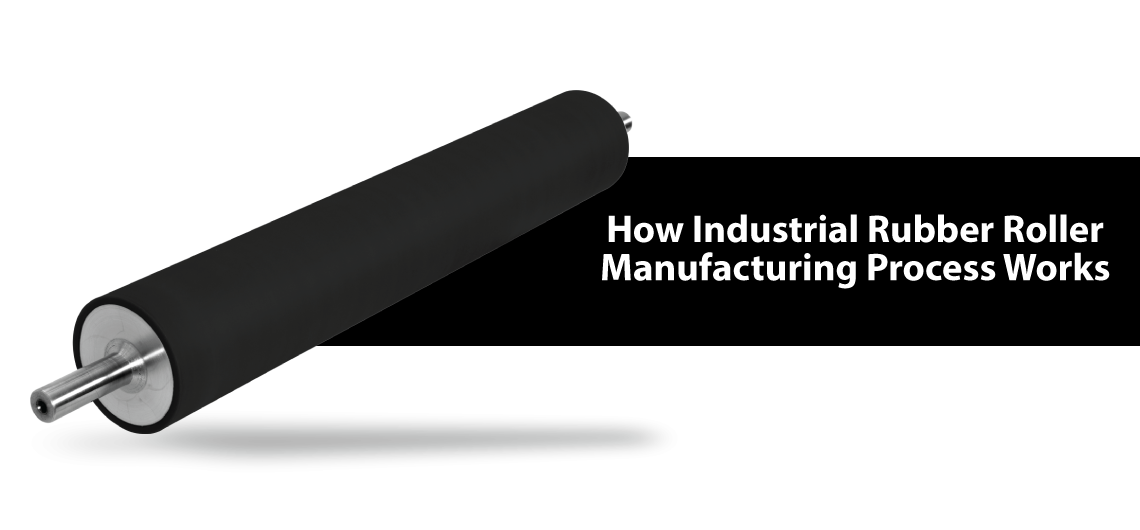
Assembling of Rubber Roller requires innovation and experience. We centre around components, for example, the exhibition of the rubber mixes, completing exactness, quality support, roller centre material and structure, and appropriate holding of rubber and centre. Every one of these parts is imperative to consider a quality item toward the end.
Rubber Nip Roller has a streamlined presentation when they are fittingly chosen for every application thinking about all the important conditions.
Rubber Roller Manufacturing Process
Rubber Fabrication
Standard rubber roller production includes a rubber manufacture step, which can be accomplished either by handling strategy, expulsion, projecting, or bite the dust press. Plying involves the calendering cycle, during which, to make calendered rubber sheeting, rubber is gone through a mix of rollers.
As the rubber sheet travels through the rollers, it is smoothed and leveled. Utilizing this cycle, two kinds of the polymer can be sandwiched together if an application requests.
When the calendared sheet is prepared, the sheet turns into rubber in front of an iron centre or another metal centre. With that, it is a rubber roller. Given customer prerequisites, sheets can be cleaned, coated or emblazoned.
Extrusion is the most widely recognized assembling technique that includes an extruder. With this strategy, a rubber profile of fixed cross-sectional can be made consistently by-going rubber through a bite the dust. In this cycle, crude material is warmed by going it through a screw system, which warms material by a consolidated activity of pressing factor and temperature, and afterwards, the material is pushed through the kick the bucket.
The basic advance in this manufacturing procedure is restoring, which includes moulding the rubber item in a controlled climate where it is uncovered foreordained temperature and pressing factor. The relieving cycle invigorates the underlying rubber item by eliminating porosity.
Roller Manufacturing
At Industrial Roller Company, Rubber rollers are normally fabricated through projecting or trim, yet they may likewise make through expulsion.
Projecting processes are used uniquely with rubber rollers that have metallic centres. For this situation, centres are shaped through a metal projecting cycle like stepping, after which they are bound to a rubber covering. Restricting is done utilizing a holding specialist that normally made of polymer-dissolvable arrangements, a preliminary coat dependent on phenolic-style saps and a top layer of blended polymers and other different materials.
Rubber roller moulding processes incorporate pressure trim and infusion shaping; these are utilized for strong rollers. Extrusion of rubber rollers happens when producers heat picked elastomeric material(s) and press the liquid material through a bite the dust that has a pin in the middle to manufacture the empty cylinder
Scoring
The following stage includes surface scoring. Various scores can be made on a surface of rubber, including square, trapezoidal, “V”, twofold edge saw, half hover, and round. Also, on a rubber roll, these depressions can be made vertically, evenly, helically, worm, jewel cut score and screw strung.
Review
Toward the finish of this progression, the items are reviewed for abnormality.
Materials
The elastomeric materials from which Manufacturers, India can browse is genuinely changed. Every material has its own qualities and shortcomings, however, every one of them has some degree of protection from water, wear, certain synthetic compounds and warmth boundaries.
Among the many, a couple of materials that are oftentimes used to manufacture rubber rollers include EPDM, silicone, nitrile, neoprene, polyurethane and normal rubber. Metal centre rollers are typically made with steel, tempered steel, aluminium or another metal that fits application prerequisites.
Contemplations and Customization
When planning a rubber move for a particular application, producers think about various components, for example, synthetic contact, standard prerequisites, required length, load limit, thickness, shape and tightening, and so forth They likewise consider roller speed.
On the off chance that a roller is presented to high velocities with enormous burdens, producers, for the most part, suggest you purchase rubber moves with a centre that can be water-cooled. At the point when rubber is nipped, it discharges heat—called hysteresis warmth—and water cooling is a compelling method to contain that heat.
Producers can undoubtedly redo rubber rolls per your details. For instance, you may arrange rubber moves to meet remarkable width and length details, and you may arrange them in an assortment of thicknesses and shadings.
Moreover, makers can utilize various sorts of rubber to make rollers idle against synthetic substances dependent on an application. They can likewise put on forte completes or coatings and claim to fame moulding. Discover more by examining customization with your forthcoming provider.


